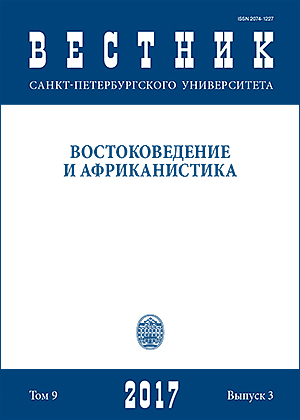Particularities of the historical development of Changchun City: Cultural interaction in the urban architecture in late 19th — early 20th centuries
DOI:
https://doi.org/10.21638/11701/spbu13.2017.303Abstract
Changchun as a modern city grew during the construction of the Chinese Eastern Railway and South Manchurian Railway. The article discusses the interaction and interpenetration of different cultures on the example of the architectural development of the city of Changchun from the late 19th to the first half of the 20th century. This period encompasses two key stages of urban development: the initial period and the period of the South Manchurian Railway. The article gives examples of the most typical samples of the architectural style of the period. The study of the development of architecture in Changchun City and its comparison with other major cities (Shenyang and Harbin) of Northeast China of that time shows that in the process of development Changchun city has changed its architectural style. This occurred under the influence of traditional Chinese, Russian, and later — Japanese architecture.
Keywords:
Changchun, Chinese Eastern Railway, South Manchuria Railway, Chinese traditional architecture, Russian architecture, Japanese architecture
Downloads
References
References
Downloads
Published
How to Cite
Issue
Section
License
Articles of "Vestnik of Saint Petersburg University. Asian and African Studies" are open access distributed under the terms of the License Agreement with Saint Petersburg State University, which permits to the authors unrestricted distribution and self-archiving free of charge.





